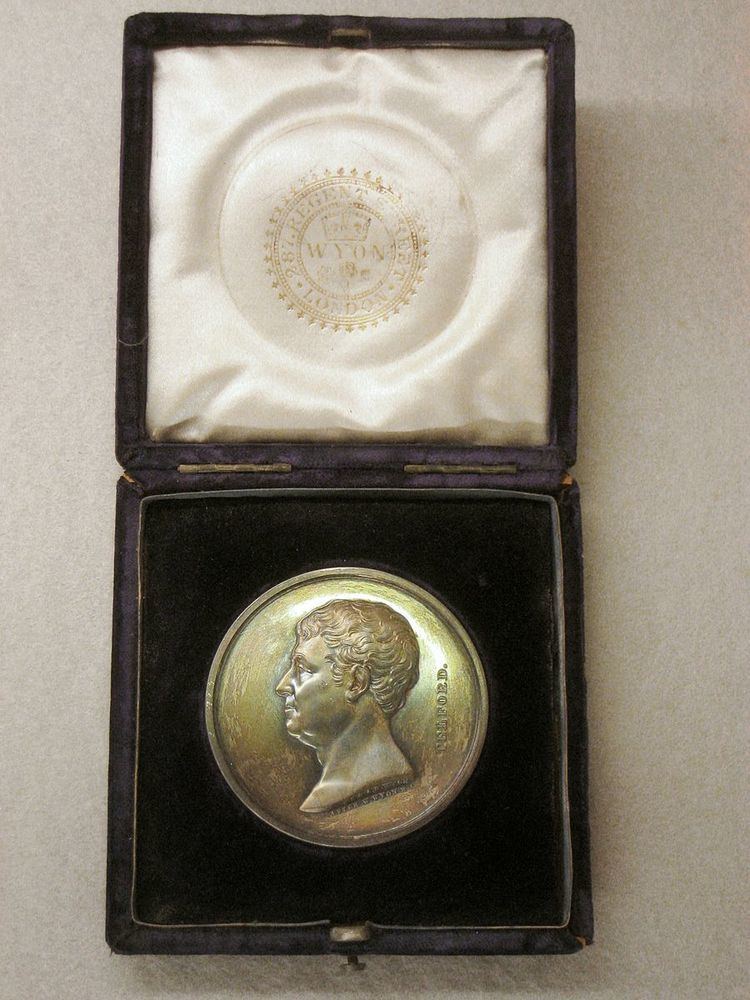 | ||
The Telford Medal is a prize awarded by the British Institution of Civil Engineers (ICE) for a paper, or series of papers; it was introduced in 1835 following a bequest made by Thomas Telford, the ICE's first president. It can be awarded in gold, silver or bronze; the Telford Gold Medal is the highest award the institution can bestow.
Contents
History
In 1834 Scottish civil engineer and the Institution of Civil Engineers' first President (1820-1834), Thomas Telford died, leaving in his will his library of technical works to the Institution of Civil Engineers, as well as a bequest of £2000; the interest from which was to be used to for the purpose of Annual Premiums. The council of the institute decided to expend the premiums on both honorary and monetary rewards, the honorary awards being named "Telford Medals", which would be awarded in gold, silver and bronze forms. Suitable candidates for the awards were submitters of drawings, models, diagrams or essays relating to civil engineering or any other new equipment of invention relating to engineering or surveying in general, which is regarded as most seminal and influential. The awards were to be open to both Englishmen and foreigners equally. After provision for the Telford Medal, the remaining income is used for up to four annual prizes for papers presented to the Institution.
The inaugural gold award was given in June 1837 to John Timperley for his account of the history and construction of the town docks of the Port of Kingston upon Hull, published in volume 1 of the Transactions of the Institution of Civil Engineers; the medals carried an image of Telford on one side, and of his Menai Bridge on the reverse. The bust of Telford was a design by William Wyon and the medal is also signed "J. S. and A. B. Wyon" a collaboration of Joseph Shepherd Wyon and his brother, Alfred Benjamin Wyon. John Macneill, James M. Rendel, Michael A. Borthwick, Peter Barlow, and Benedetto Albano received silver awards in the same session.
Telford Medal
The Telford gold medal is issued generally once a year. See below for the Telford Premium of which a larger number (up to 10, may be issued each year in the silver and bronze categories).
21st Century
Gold Silver Bronze
20th Century
Gold Silver Bronze
19th Century
Gold Silver Bronze
Undated (before 1910) recipients of Telford Medal
Source: Institute of Civil Engineers
Telford Premium
Telford Premiums are issued initially as a monetary or book award with multiple awards in most years, some of the awards also going to Medal winners.
